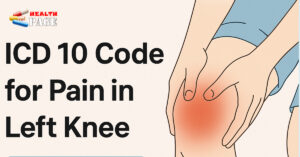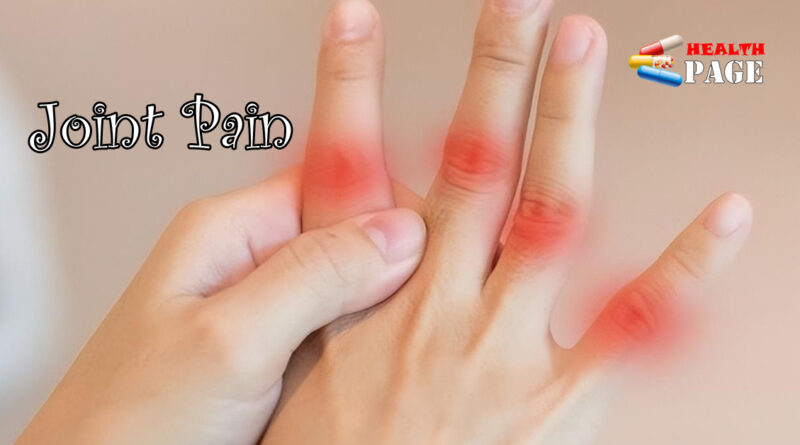The difference between leukemia and common joint pain
Joint pain is a common symptom in daily life, and many people have experienced it. It may be caused by a variety of reasons, such as overuse, trauma, arthritis, etc., which brings varying degrees of distress and inconvenience to people’s lives. However, there is a type of joint pain that may hide a more serious health risk, that is, joint pain caused by leukemia . Although leukemia is relatively rare, its early symptoms may be similar to common joint pain and are easily ignored, thus delaying the disease.
1. Common characteristics of common joint pain
1. The nature of pain is diverse
The pain of common joint pain varies, and the most common ones are tingling, swelling, and soreness. This pain is usually related to the activity and rest state of the joints. For example, after overusing the joints, such as walking, running, or repetitive manual labor for a long time, the joints may feel sore, which is due to the fatigue of the muscles, ligaments and other tissues around the joints. When the joints are in a static state, the pain may be reduce or disappear.
For example, some people who need to sit for a long time because of their work may feel a short-term tingling in the knee joint when they get up and move around, but the tingling often eases after a little movement. In addition, for some joint diseases such as osteoarthritis , the pain may be more obvious when getting up in the morning. It will be relieve after activity, but as the amount of activity increases, the pain will increase again, showing a characteristic of alternating “rest pain” and “activity pain”.
2. Obvious local symptoms
Ordinary joint pain is often accompanied by some obvious local symptoms. There may be tenderness in the joint, that is, the pain will be aggravate when pressing the joint, because inflammation or injury stimulates the nerve endings around the joint. For example, when the finger joints have tenosynovitis , pressing the affected joints will cause obvious tenderness. Redness and swelling are also one of the common symptoms. When the joints have an inflammatory reaction, the local blood vessels dilate and the blood flow increases, causing the tissues around the joints to become red and swollen. For example, when gouty arthritis occurs, the affected joints often show symptoms of redness, swelling, heat and pain, and the skin becomes red and the temperature rises.
Some joint diseases may also cause joint effusion, which makes the joints swollen and the movement is limited. For example, in the case of knee synovitis, the patient will feel the knee joint swelling, difficulty in flexion and extension, and sometimes feel the fluctuation of effusion in the joint. In addition, there may be snapping when the joint moves, which is cause by the wear of the articular cartilage, the uneven joint surface, or the friction of the tendons, ligaments and other tissues around the joints. For example, some elderly people often hear a “crunching” snapping sound when they move their knee joints.

2. Unique manifestations of joint pain caused by leukemia
1. Characteristics of pain
The joint pain caused by leukemia has unique properties. The pain is often multiple and migratory, and may affect multiple joints at the same time. The pain site is not fixed. Sometimes it is the wrist, and sometimes it may move to the knees or ankles. It often manifests as symmetrical joint pain. This pain is usually dull or sore, but if bone marrow necrosis occurs, the pain will become extremely severe and even unbearable for the patient. Compared with ordinary pain, the onset of leukemia joint pain is more hidden. In the early stage, it may be just a slight discomfort, which is easy to be ignore by the patient.
However, as the disease progresses, the pain will gradually increase and last longer. It will not be significantly relieve after rest or simple treatment like ordinary pain. For example, some leukemia patients will feel pain in the joints of the limbs in turn, and the pain level will gradually increase. Even if ordinary painkillers take, the effect is not obvious.
2. Associated symptoms
Leukemia joint pain is usually accompanied by a series of systemic symptoms, which is one of the important differences from ordinary joint pain. Patients may have fever, which can be as high as 38°C or even higher, and the fever is more persistent and difficult to subside. This is because the immune system of leukemia patients is damage and the body is susceptible to infection, which causes fever symptoms. Anemia is also a common accompanying symptom. Patients will feel fatigue, dizziness, and pale face. This is because leukemia cells inhibit normal hematopoiesis, resulting in reduced red blood cell production. In addition, patients may also have bleeding tendencies such as skin petechiae, ecchymosis, nosebleeds, and gum bleeding, which is due to a decrease in the number of platelets or abnormal function. Some patients will also have swollen lymph nodes, which are common in the neck, armpits, groin and other parts.
The enlarged lymph nodes are generally hard in texture, non-tender, movable or adherent to surrounding tissues. Some leukemia patients will also have gingival hyperplasia, which manifests as swollen and bleeding gums, and even covers the surface of the teeth, affecting normal chewing and oral hygiene. For example, a leukemia patient not only experiences pain, but also finds that many bruises appear on his body for no apparent reason, he becomes breathless after a little activity, and the lymph nodes in his neck become swollen. These symptoms combined require a high level of vigilance regarding the possibility of leukemia.
3. How to accurately distinguish
The root cause of leukemia joint pain is the infiltration of leukemia cells into bones and joints. Leukemia is a malignant tumor of the hematopoietic system. Leukemia cells proliferate in large numbers in the bone marrow, can penetrate the bone cortex and infiltrate into the tissues around the joints, stimulate nerve endings, and thus cause pain. This pain is closely related to the progression of leukemia. As leukemia cells increase and spread, joint pain may gradually worsen and the range may also expand. For example, in acute lymphocytic leukemia, about 25% of pediatric patients experience joint pain, which is mainly due to the excessive proliferation of leukemia cells in the bone marrow cavity, which puts pressure on the bones and invades the periosteum, synovium and other tissues. The causes of ordinary joint pain are more diverse, and common ones include overuse of joints, trauma, degeneration, infection, autoimmune diseases, etc.
For example, people who engage in heavy physical labor or high-intensity exercise for a long time are prone to osteoarthritis, which leads to pain due to repeated pressure and wear on the joints; trauma such as sprains and falls can directly damage the structure of the joints, causing pain and swelling; with age, the articular cartilage will gradually wear and degenerate, which is also one of the common causes of pain in middle-aged and elderly people. Wear of the meniscus of the knee joint and bone hyperplasia of the hip joint can cause joint pain; in addition, pathogens such as bacteria and viruses infect the joints, such as suppurative arthritis , or the body’s immune system mistakenly attacks the joint tissue, such as autoimmune diseases such as rheumatoid arthritis , which can also cause symptoms such as pain, redness, swelling, and fever.

4. Differences in treatment response between the two
In terms of treatment response, there are significant differences between joint pain caused by leukemia and common joint pain. Common joint pain usually responds to conventional analgesic treatments. For example, for joint pain caused by overwork or mild sprains, proper rest, hot compresses, and taking nonsteroidal anti-inflammatory drugs. Such as ibuprofen and aspirin can often significantly relieve the pain. For some chronic joint diseases such as osteoarthritis, after using cartilage-nourishing drugs. Such as glucosamine and physical therapy (such as massage and physical therapy), symptoms will also improve. Joint pain and limited mobility will be reduced, and the patient’s quality of life can be improved to a certain extent.
However, leukemia joint pain responds poorly to conventional analgesic treatments. Because its pain is cause by the root cause of leukemia cell infiltration, simple analgesics cannot eliminate the destructive effects of leukemia cells on joints. So the pain is difficult to effectively relieve by conventional means. Even if stronger analgesics are taken, it only temporarily relieves some of the pain, and as the disease progresses. The analgesic effect of the drug will become worse and worse. This is because leukemia cells continue to proliferate and spread, and the damage to the joints continues to worsen.
For example, some leukemia patients receive treatment for common joint pain in the early stages of pain and take a variety of painkillers. But the pain persists or even gradually worsens, which suggests that it may not be common joint pain and that further investigation is needed to rule out the possibility of other serious diseases such as leukemia. Observation of treatment responses can provide important clues for distinguishing the two types of joint pain.
5. Timely diagnosis and correct response
When joint pain occurs, you should seek medical attention promptly to avoid self-judgment and medication to avoid delaying the disease. Doctors generally conduct detailed interviews, physical examinations, and related laboratory tests. Such as blood routine, erythrocyte sedimentation rate, C-reactive protein, rheumatoid factor, blood uric acid, etc. It may also perform joint X-rays, CT, magnetic resonance imaging (MRI) and other imaging examinations according to the situation to clarify the cause of joint pain. If leukemia is suspected, further examinations such as bone marrow puncture may be required.
In daily life, we should also pay attention to preventing joint pain, maintaining a proper weight, avoiding overwork and joint injuries, keeping joints warm, eating a proper diet, exercising moderately, etc. At the same time, we should pay attention to various abnormal conditions in the body. Once joint pain is found to be accompanied by fever, anemia, bleeding tendency, swollen lymph nodes and other symptoms, we should be highly alert to the possibility of leukemia and go to the hospital for a comprehensive examination in time for early diagnosis and treatment.
In short, it is very important to distinguish between common joint pain and joint pain caused by leukemia for our health. By understanding the differences between the two in terms of pain nature, accompanying symptoms, causes and treatment response, we can be more sensitive to abnormal signals from the body, make correct judgments and countermeasures when joint pain occurs, and ensure our own health and safety.



Pingback: Metacarpal Fracture Postoperative Rehabilitation: Recovery Tips
Pingback: 23 signs you grew up with ehlers-danlos syndrome
Pingback: Snap of Fingers: Why It’s a Bad Habit for Teenagers to Avoid Now
Pingback: What Medications Are Harmful to the Stomach? Must-Read it
Pingback: What Is Arthralgia? Causes, Symptoms & Risk Factors Explained